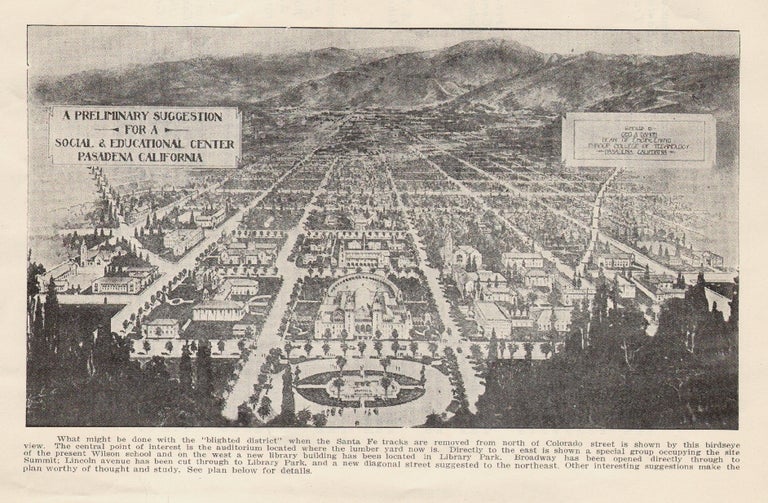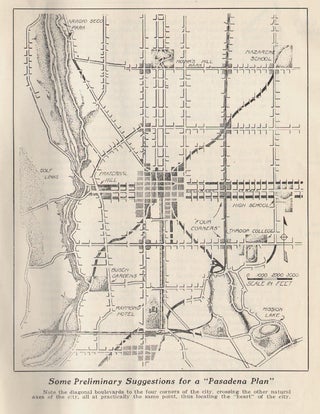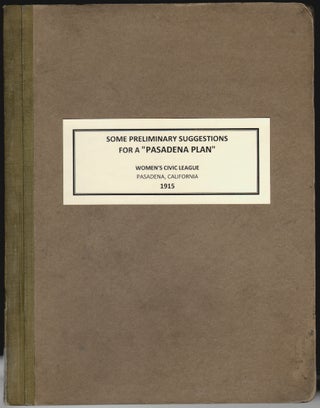Some Preliminary Suggestions for a "Pasadena Plan"
Pasadena, CA: Women's Civic League, 1915.
First Edition. 7.75 x 10.75 inches, [18] pp, illustrated with views and plans. Ex-library; original wrappers bound into cloth-backed boards, with new mounted label on cover. Bookplate, perforated stamps on several pages, moderate general handling wear; good. Founded in 1911, the Woman’s Civic League of Pasadena described itself as "a body of non-partisan, patriotic women whose aim and desire is to receive reliable information pertaining to the betterment of the city." They advocated for improving public policy on issues of community health (pasteurization of milk, clean water, trash collection), education, labor, and city planning. The members actively promoted the ideals of the City Beautiful Movement, which held that beautification of the urban landscape enhanced the quality of life and moral and civic virtue of a city's residents. In this scarce report, they published excerpts from two speeches by George A. Damon of the Throop Institute of Technology (now Caltech), who proposed removing the Santa Fe railroad tracks ("a distinct blight upon a large section of the down town district") from the city center and adding a new library, auditorium, opera house, transportation hub, and civic center—all in a harmonious design with generous open spaces. The report reproduces the drawings Damon submitted to national planning competition, as well as those submitted to the Throop Institute's "Four Corners” competition, which aimed to secure "in graphic, understandable form, inspirations for something other than haphazard growth in neighborhood center developments." The first prize in this competition (judged blindly) went to Paul Revere Williams, a 20-year-old African American architect who went on to a successful career in Southern California and became the first black member of the American Association of Architects.
Item #19071
Sold





